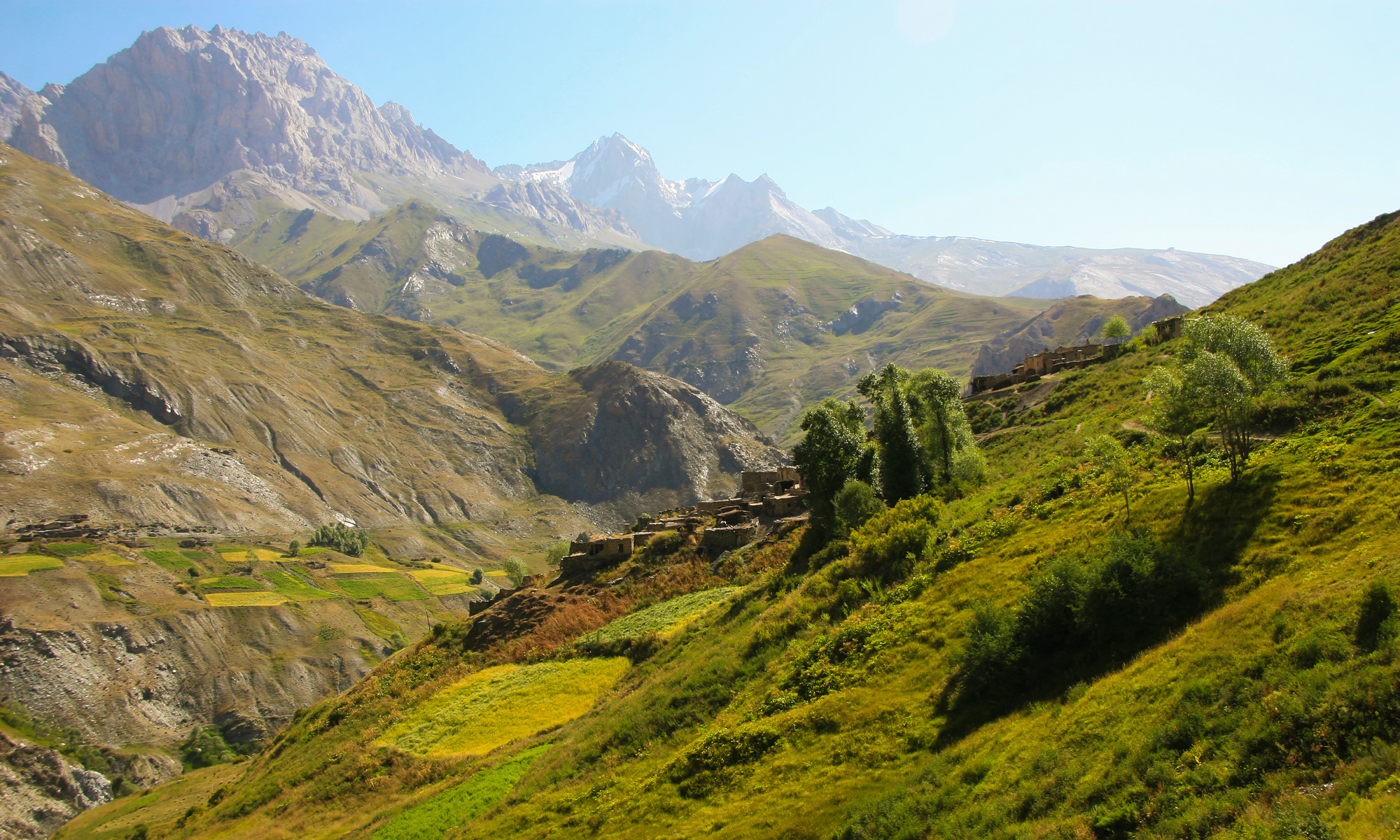In the high ridgelines of the Yaghnob Valley, where snowmelt once defined the rhythm of life and stone trails held steady for generations, the mountains are no longer still. Across this fragile and culturally rich landscape, a new form of instability is emerging—frequent landslides, sudden rockfalls, and creeping ground collapse.
Climate change has shifted the conditions beneath villagers’ feet. Erratic rainfall, thawing permafrost, and vegetation loss have combined to create a cascade of geohazards, threatening lives, livelihoods, and infrastructure in one of Tajikistan’s most environmentally and culturally sensitive regions.
This is not just a geological crisis—it is a human emergency, especially for returnee communities still rebuilding after decades of forced displacement.
Landslides are not foreign to the Yaghnob Valley. For centuries, communities here have respected the steep slopes and shifting soils, walking carefully, planting wisely, and adjusting with the seasons. But field assessments and regional environmental data now show a concerning acceleration in geohazard frequency and intensity:
-
Sudden downpours following prolonged dry spells saturate upper soils, triggering fast-moving mudslides.
-
Permafrost thaw, especially on shaded northern slopes, is causing gradual destabilization of ancient ground layers.
-
Overgrazing and deforestation, including around returnee settlements, have removed the vegetative cover that once anchored the land.
-
No slope engineering or early warning infrastructure exists, leaving communities reliant on observation, oral memory, and immediate reaction.
The result is clear: roads washed away, fields buried, and families displaced.
In recent years, villages such as Piskon and Sokan have reported recurrent rockfalls, while access paths near Margheb have been closed due to debris blocking the way. Community accounts from infrastructure and health assessments describe:
-
Essential food and medical supply routes cut off for days or weeks.
-
Irrigation systems buried under sudden slides, affecting entire growing seasons.
-
Footbridges and stone paths collapsing, isolating families and herders.
In 2015 major landslide events forced temporary evacuations. While no mass casualties were recorded, the psychological toll was deep.
As one elder said:
“We returned after 40 years. And now the land we came back to no longer stands still. It shakes in its sleep.”
For Yaghnobi communities, who live without advanced machinery or modern infrastructure, the shift from stable terrain to hazard zone is not just a physical risk—it is a disruption of memory and meaning.
Elders describe places once considered safe—well-trodden paths, grazing slopes, family gardens—now rendered unpredictable. Children grow up with the sound of falling rocks as part of their environment.
The emotional toll of climate-linked uncertainty, especially among those who already carry the trauma of deportation and return, cannot be overstated.
While high-cost slope engineering may be out of reach for remote communities, low-tech, community-based mitigation strategies can significantly reduce the risk:
1. Community Hazard Mapping
-
Use GPS-enabled tools and local ecological knowledge to mark high-risk zones, updated seasonally.
-
Involve elders and herders in building oral-historical hazard maps.
2. Slope Stabilization
-
Promote replanting of native grasses and shrubs, especially along water channels and paths.
-
Encourage stone bunding and basic terracing to slow runoff.
3. Drainage Improvements
-
Build simple runoff diversions with local stone to channel water away from inhabited zones.
-
Train youth and school groups in identifying early signs of water buildup or slope shifting.
4. Community Preparedness
-
Initiate seasonal awareness campaigns, timed with snowmelt and monsoon cycles.
-
Equip villages with basic tools and protective equipment for emergency response.
5. Integration into Conservation Planning
-
Embed slope monitoring and geohazard response in the proposed Natural-Ethnographic Park framework, using protected status to secure funding and technical support.
Programs piloted by GIZ, UNDP, and FOCUS Humanitarian Assistance in other mountain regions of Tajikistan provide blueprints for cost-effective slope management, early warning systems, and community preparedness initiatives that could be adapted for Yaghnob.
The mountains of Yaghnob have long held memory, language, and livelihood. But now, as the climate shifts, those same mountains are in motion—quietly, suddenly, destructively.
To support the people of Yaghnob is not only to address economic poverty or cultural heritage. It is to protect a living relationship with a landscape now slipping from its foundations.
